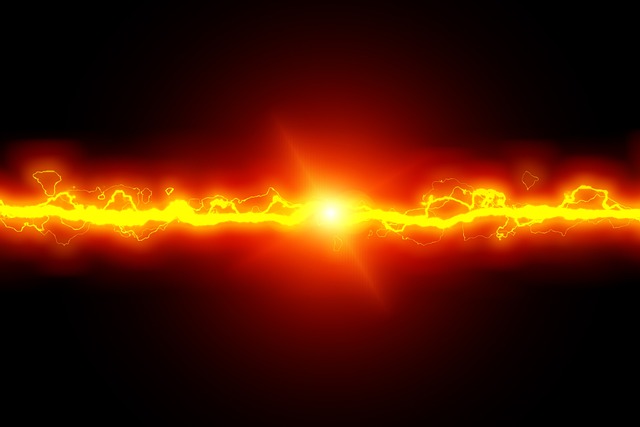Electric fields are a central part of electrostatics, and one of the fascinating ideas linked to them is that electric fields store energy. But how is this energy distributed in space? This is where the concept of energy density of an electric field comes in.
What is Energy Density?
Energy density refers to the amount of electric potential energy stored per unit volume in the region where an electric field exists.
In simple terms, just like a battery stores energy in a compact space, an electric field stores energy in the space around charges. But instead of a battery’s chemical energy, here it’s electrostatic energy.

Formula for Energy Density
The energy density (u) of an electric field is given by the formula:
u = 1/2€0E2
Where:
u = energy density (in J/m³)
€0 = permittivity of free space = 8.854 X 10-12C2/N
E2 = electric field intensity (in V/m)

If the field is inside a material medium (not vacuum), then the formula becomes:
u = 1/2€E2
Where € is the permittivity of the material.
Understanding the Formula
The formula shows that:
The stronger the electric field E, the more energy is stored per unit volume.
The energy density is directly proportional to the square of the electric field.
The factor €0 or € determines how much energy is stored depending on the medium.
Derivation (Brief Overview)
The energy stored in a capacitor is:
U = 1/2CV2
For a parallel plate capacitor,
Capacitance C = €0A/d
Electric field E = V/d
Substitute into energy formula:
U = 1/2 €0A/d (E.d)2 = 1/2 €0 E2Ad
Here, A . d = Volume between the plates.
So,
Energy Density u = U / Volume = 1/2€0E2
Physical Significance
Space isn’t empty! When an electric field exists, it fills the space with energy.
Expression for the energy stored in a capacitor
Consider a capacitor of capacitance C. Initially, its two plants are unchanged. Suppose the positive charge is transferred from plate 2 to plate 1 bit by bit. In this process, external work has to be done because at any stage plate 1 is at higher potential than the plate 2. Suppose at any instant the plates 1 and 2 have charges Q’ and –Q’ respectively. Then the potential difference between the two plates will be V’ = Q’/ C.
Even a vacuum stores energy due to the electric field.
This stored energy can do work, for example, in moving charges, powering circuits, or generating electromagnetic waves.
Practical Applications
Capacitors:
Capacitors store electric energy in the field between their plates. The energy density helps determine how much energy a capacitor can hold.
Dielectric Materials:
When a dielectric is placed inside a capacitor, it changes the energy density due to its permittivity. This principle is used in designing efficient capacitors.
Electromagnetic Waves:
Electric fields carry energy through space as part of electromagnetic waves (like light, radio waves). The energy density concept helps explain how much energy these waves transport.
Electric Field Mapping:
In simulations and real-world applications, engineers calculate energy density to understand how electric fields behave in different regions, such as around high-voltage equipment.
Units and Dimensions
SI unit: Joules per cubic metre (J/m³)
Dimensions: [ML-1T-2] – same as pressure and energy per unit volume.
Key Points to Remember
Energy is not stored in the charge or the plate of a capacitor, but in the electric field between them.
More electric field = More energy density
Applies in vacuum and in materials (using €0 or €)
Conceptual Insight
If we imagine space around a charge or between capacitor plates as filled with invisible energy, we are beginning to grasp the power of this idea. The electric field acts like a container for energy, and energy density tells us how much is packed into each cubic meter of that space.
This idea even stretches into advanced topics like relativity, plasma physics, and energy transmission in space.
